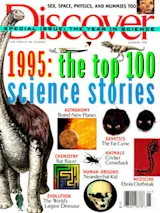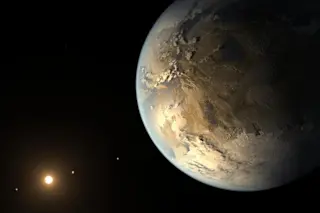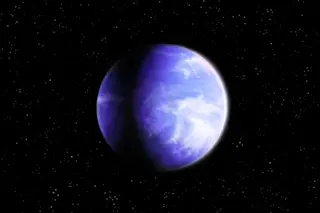Ever since astronomers realized that stars were like the sun, just farther removed, they have wondered whether these other suns might have their own planets--perhaps inhabited ones. So when astronomers Michel Mayor and Didier Queloz of the University of Geneva quietly reported in October that they had detected a Jupiter-size planet circling a fairly mediocre star 57 light-years away, the news did not stay quiet long. It spread through the astronomical community like a tidal wave--one that spilled right onto the likes of Nightline and the Today show. The enthusiasm was more than justified, says astronomer Geoff Marcy of San Francisco State University, who has himself spent much of the past decade trying to locate extrasolar planets--and who quickly confirmed the Swiss find. This is a discovery that any human being who is curious about the universe should rejoice in, Marcy says. Everyone can now look up in the night ...
The Planet at 51 Peg
The finding of an extrasolar planet around star 51 Peg marks a significant milestone in the search for extraterrestrial life.
More on Discover
Stay Curious
SubscribeTo The Magazine
Save up to 40% off the cover price when you subscribe to Discover magazine.
Subscribe













